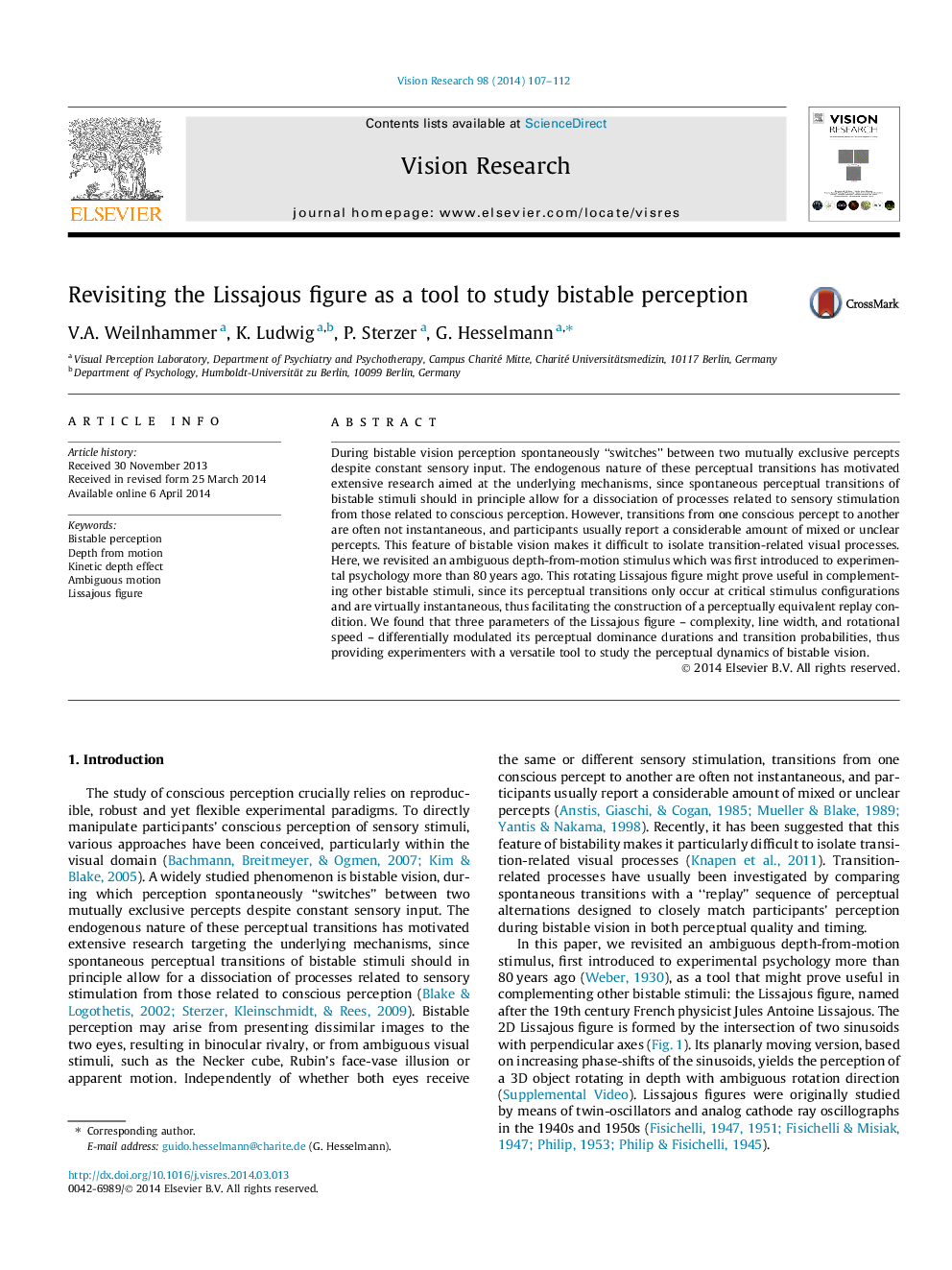| کد مقاله | کد نشریه | سال انتشار | مقاله انگلیسی | نسخه تمام متن |
|---|---|---|---|---|
| 6203519 | 1603196 | 2014 | 6 صفحه PDF | دانلود رایگان |

- Complexity influences dominance durations of the bistable Lissajous figure.
- Line width and rotational speed influence its perceptual dynamics too.
- The Lissajous figure is a versatile tool to study bistable vision.
During bistable vision perception spontaneously “switches” between two mutually exclusive percepts despite constant sensory input. The endogenous nature of these perceptual transitions has motivated extensive research aimed at the underlying mechanisms, since spontaneous perceptual transitions of bistable stimuli should in principle allow for a dissociation of processes related to sensory stimulation from those related to conscious perception. However, transitions from one conscious percept to another are often not instantaneous, and participants usually report a considerable amount of mixed or unclear percepts. This feature of bistable vision makes it difficult to isolate transition-related visual processes. Here, we revisited an ambiguous depth-from-motion stimulus which was first introduced to experimental psychology more than 80Â years ago. This rotating Lissajous figure might prove useful in complementing other bistable stimuli, since its perceptual transitions only occur at critical stimulus configurations and are virtually instantaneous, thus facilitating the construction of a perceptually equivalent replay condition. We found that three parameters of the Lissajous figure - complexity, line width, and rotational speed - differentially modulated its perceptual dominance durations and transition probabilities, thus providing experimenters with a versatile tool to study the perceptual dynamics of bistable vision.
Journal: Vision Research - Volume 98, May 2014, Pages 107-112